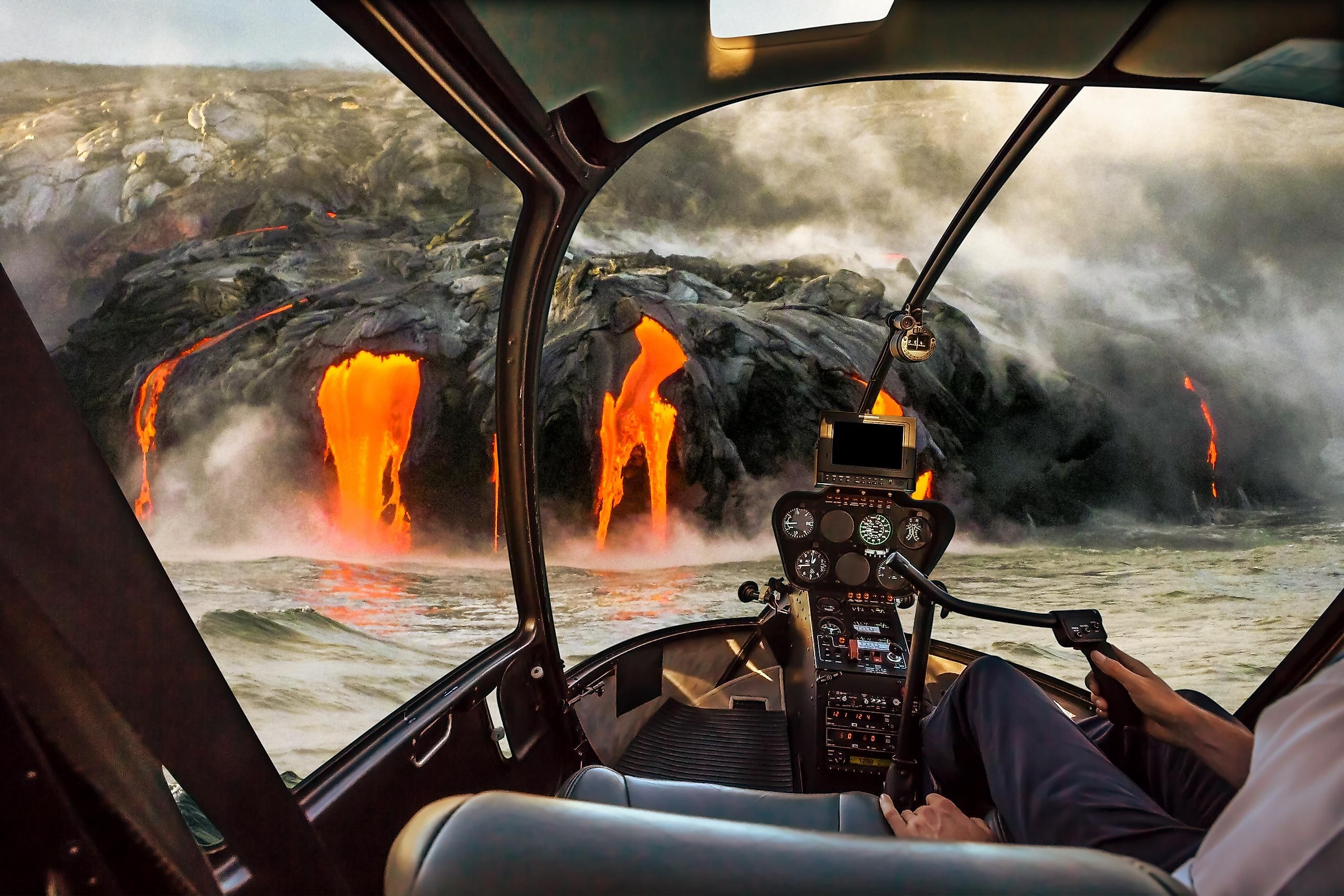
10 Volcanoes Worth Seeing Around The World
Volcanoes are ponderous in so many ways, from their grand stance, their solitude presence, to the colourful shows they put on, and the destructive powers they possess. The volcanoes on this list are also set amongst some of the most scenic landscapes in the world.
Eyjafjallajökull, Iceland
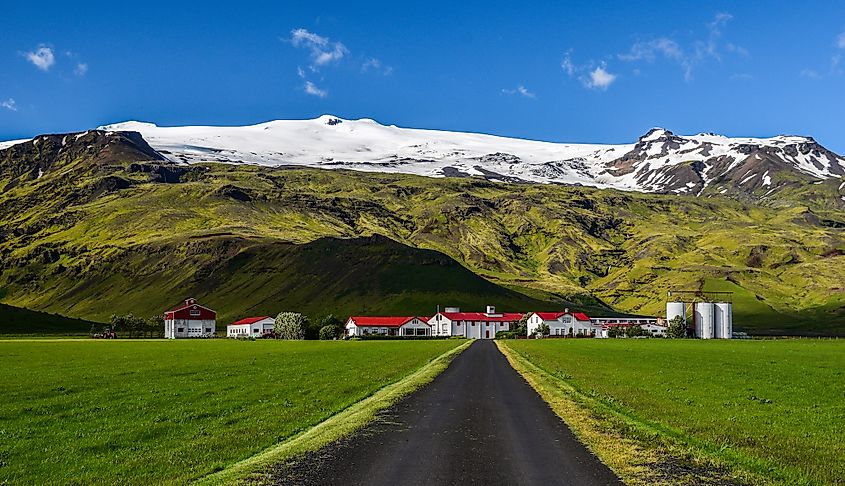
One might remember how just eleven years ago, in April, this volcano has caused a chaos of delays and cancellations for months for flights leaving to or from the small island country of Iceland, in the south of which it sits, now seemingly innocent. Erupting from January until May, In April 2010, its prior eruptions were recorded in 920, 1612 or 1613, and the 14 months long eruption from 1821 to 1823. Interestingly enough they all took place during, or shortly before the 15.5-mile away Katla volcano also erupted.
Lying beneath the Eyjafjallajökull or the Eyjafjalla Glacier, the volcano, whose name is derived from the local phrase meaning "the island's mountain glacier", is also known as Eyjafjallajökull, Eyjafjalla volcano, Eyjafjöll, or Eyjafjalla Glacier volcano. For the active adventurers to spectate this 5,466 feet- or 1,666 meters-tall, mountain, one can take the Superjeep and Hiking Tour in Thormark from Reykjavik, while the best views can be obtained from the Wild South Waterfalls, the Black Beach, and for the duration of the Glacier Hike from Reykjavik.
Kilauea, Hawaii
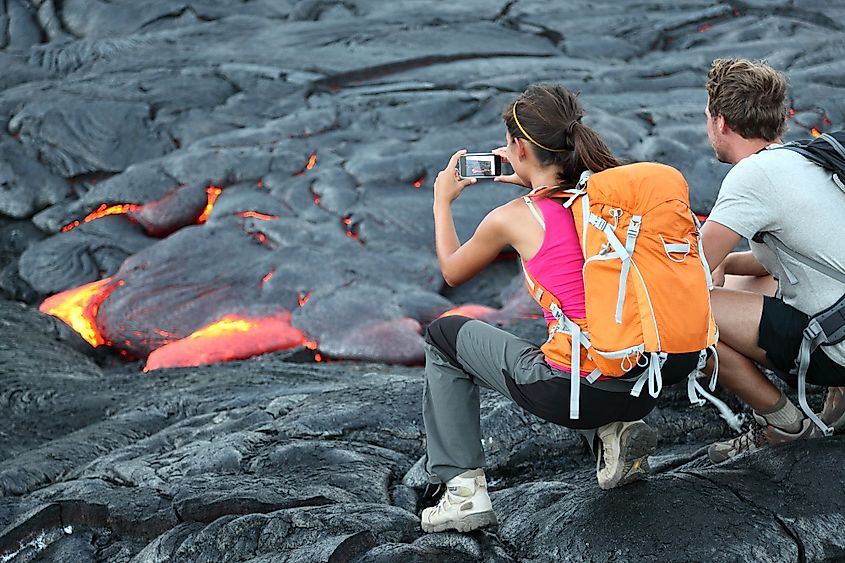
Part of the Hawaii Volcanoes National Park, the smaller 1,247 m Kilauea, is just as active as its neighbour, the world’s largest volcano, the 4,169 m-tall Mauna Loa. Actively spewing out considerable amounts of dark red lava since 1983 that slowly makes its way down the slopes, this energetic volcano is not that easy to access but is still paid visit by some three million visitors each year. One of the most popular activities involves visiting the The Kīlauea Visitor Center and Jaggar museum for unbelievable views of the Halema’uma’u crater’s lava lake.
Such popularity is due to the fact that the volcano actively puts on some truly mesmerizing shows of enchanting lava fountains while the risk of any catastrophic event, have been historically almost non-existent. With no public transport available to take tourists to the location, one can hire a car or a private excursion for the close-up of the spectacle. The setting at night-time is even more unforgettable, when the surrounding landscape, the sky, and with the night clouds are illuminated by the glowing magma.
Mount Bromo, Indonesia
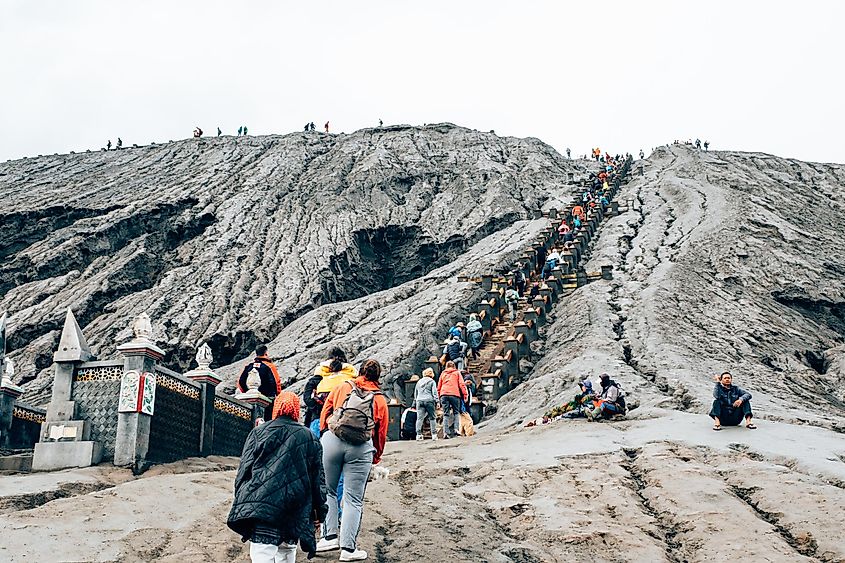
This East Java region is historically interesting for being a sacrifice spot, where the ancient Indonesian deities would throw live victims into the open mouth of the breathing crater atop Mount Bromo volcano. Towering in solitude over the open, Sea of Sand, there are also incredible views of the red smoke, especially during dawn and dusk. With the first and last rays of the sun striking the smoke head-on, the bloody-red spectacle makes one reminisce of the sacrifices of the past.
Nevertheless, many others find romanticism in this place, with the crimson colors reminiscent of the feeling of love, and opt out for the night-after-night viewings of the Mount Bromo sunrise, from Surabaya. Set in the midst of magnificent Indonesian landscape, it also contains the magically- turquoise sulphur lake right at the volcano's heart, as the world's largest acidic lake. When the sulphuric gases of the crater combust, an electric blue flame is produced, known as the “Ijen Blue Fire”, released from the cracks within the volcano to ignite when they come in contact with air.
Mount Etna, Italy
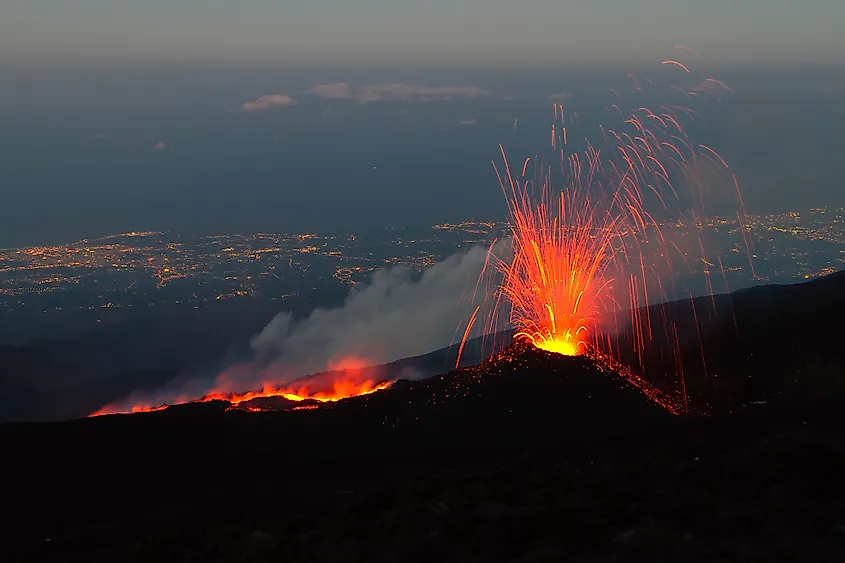
Europe's highest, and most active volcano in the world, sitting in the picturesque country scene in close proximity to Catania, in Eastern Italy, Mount Etna last erupted in February 2021 in a spectacle of ash that reached the city. Taking a guided tour to the heat-dispersing epicentre at the top makes for a truly unique experience, where one will also witness solidified lava flows along the way, left behind from centuries ago. Layers should be packed, for the ironically chilly altitude temperatures near the steaming and smoking summit.
Containing a few peaking points, one higher than the other, the 2,920 m summit is accessible to tourists for a round-trip that can be made in a single afternoon by driving, cycling or taking the bus to the 1,923m point, followed by a cable car and a jeep ride. As active and crated as it is, Etna continues to pose a serious threat for the city of Catania, which it has destroyed almost entirely, along with the neighbouring villages, in its 1669 eruption. Following the adventure, one can visit the sea near the foot, or take a short trip to the historically-rich nearby city of Palermo.
Mt. Fuji, Japan
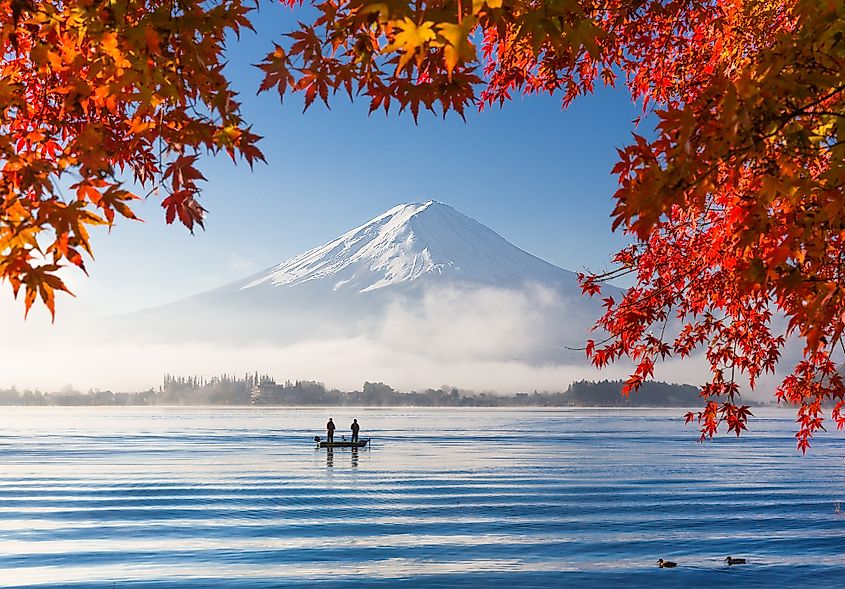
It is no surprise that this, world's most perfect volcano, with its conical shape, snow-covered top, and grand statue is one of the most-visited attractions in Japan, and volcanoes in the world. According to geologists, the volcano is currently active, although its last eruption took place back in 1708. For panoramic views of the giant framed by cherry blossom trees, tourists can have a day's worth getaway by taking the bullet between Tokyo and Yokohama during the summer's blooming season, or a cruise, while families can visit the Fuji-Q Highland Amusement Park.
Although the origin of the name is unknown, Mt. Fuji, also called Fujisan or Fujiyama, first appeared as Fuji no Yama in writing in 713 CE of government records. This highest mountain in Japan at 12,388 feet (3,776 m) is right on the coast of the Pacific Ocean, near the cities of Yamanashi and Shizuoka in the center of the Honshu Island. Some 60 miles (100 km) west from the Tokyo-Yokohama metropolitan area, it is also part of the Fuji-Hakone-Ixu National Park, and it is also a designated World Heritage site since 2013.
Mount Vesuvius, Italy
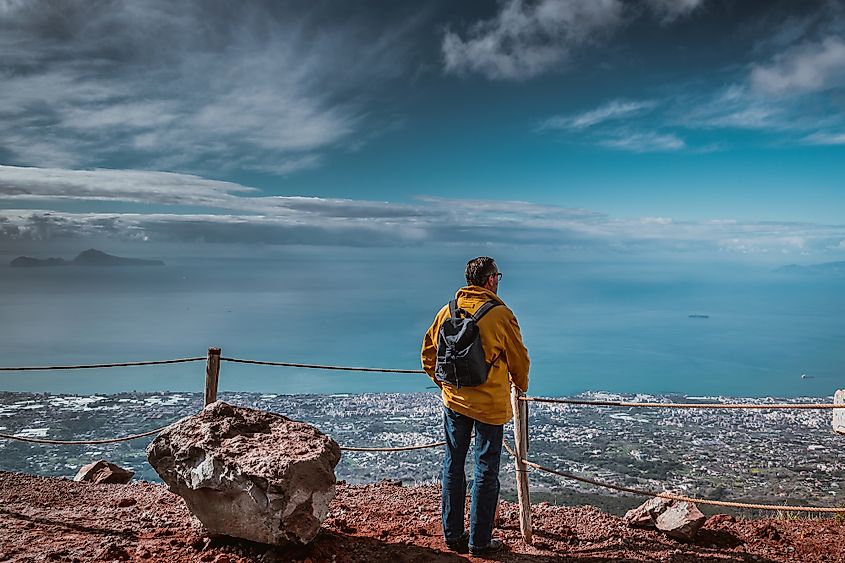
This extremely popular universal volcano is known for its historically dangerous activity, for the vanishing of Pompeii and Herculaneum 79 AD. Sitting in southern Italy's picturesque landscape, its more recent deeds included lava flows that killed 218 people in 1906, and an eruptive destruction of a town, in 1944. Not having erupted since, its innocently-looking caldera at the summit is accessible to be peered in for the curious tourists today, who are willing to hike a top.
Being neither very tall, at 1,281 m, nor reminiscent of its past ferociousness due to its current inactivity, many tourists still tramp its slopes daily. One can also join that crowd from a car park at 1,000 m, climbing the remaining part on the well-traversed path to the most visited, main crater, where one will find the steam rising, with a smell of sulphur burning their nostrils. Despite lacking in certain compartments, in which volcanoes are ranked, the Italy's landscape that opens up from the slopes and the summit, are some of the world's best views.
Pico de Fogo, Cape Verde
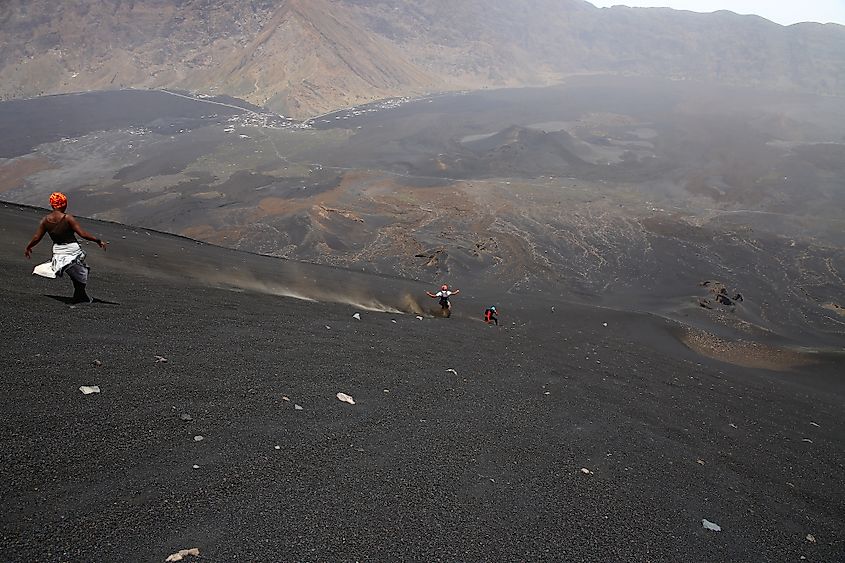
Amongst other islands, the 25-km-wide island of Fogo sits in the eastern part of the archipelago, with the steep-sided cone of Pico centrally-located and rising over a kilometer from the caldera floor. According to the residents that live in the small village Cha das Calderas, within the 9km-wide caldera of the volcano itself, the name of the mountain, derived from the Portuguese word for fire, “Fogo”, perfectly describes the actively, put-on spectacle. Despite having to evacuate the village every time this threatens to happens, they still choose to come back time after time.
With a 500-m-wide and 150-m-deep summit crater, the first volcanic activity was recorded from 1500 CE, only seizing to continuously produce lava flows 260 years later. Eruptions of the eighteenth and nineteenth centuries reached the eastern coast, while the 1951 and 1955 were contained. The next ones, lasting from November 2014 to February 2015 destroyed the village of Portela in late November, and, pouring into Bangaeira, destroyed it by December 8. Despite being tantrum-causing there are guided tours to the summit of this energetic 2,829-meter misfit.
Pacaya, Guatemala
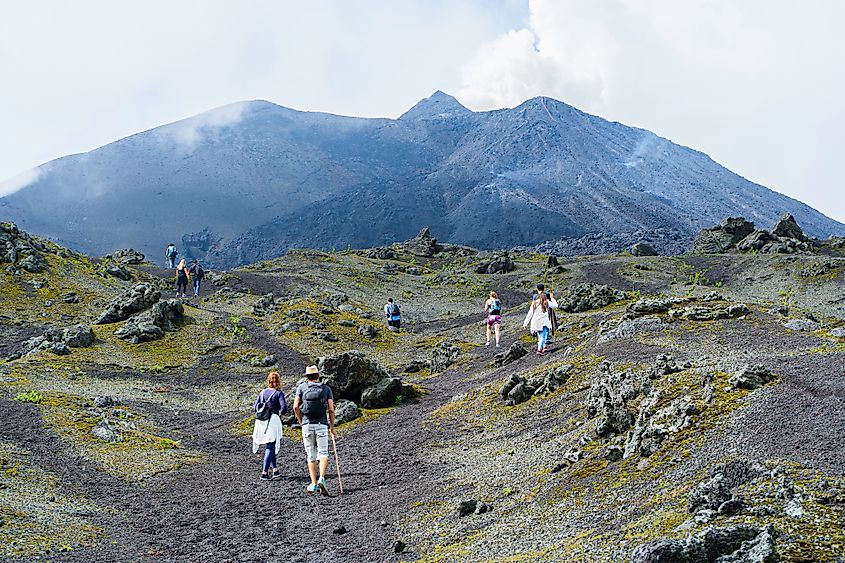
Although the climb to the summit is considerable, the magnificent views that open up from the top are worth the strenuous muscle effort. Standing guard above Antigua, Guatemala's major city, Pacaya is a constantly smoking wonder, where one can also do some major lava spotting on the way, left behind from its infrequent eruptions. For the active, the two-hour trek from Antigua to Pacaya is recommended, while for a more relaxing time spent, a two-hour Pacaya Volcano Tour can be enjoyed inclusive with hot springs and a lunch.
This complex basalt volcano is set on the outskirt of the southern topographic rim of the 14 x 16 km Pleistocene Amatitlán caldera. There is also the Cerro Grande lava dome and a younger volcano to the SW. The volcano, having collapsed some 1100 years ago, left behind a 25 km long deposit of avalanche debris all the way to the Pacific coastal plain. The Cerro Chino crater was last active in the 19th century while Pacaya itself, erupted rather frequently with intermittent lava flows and occasional larger self-destructive explosive eruptions.
Shishaldin, Alaska
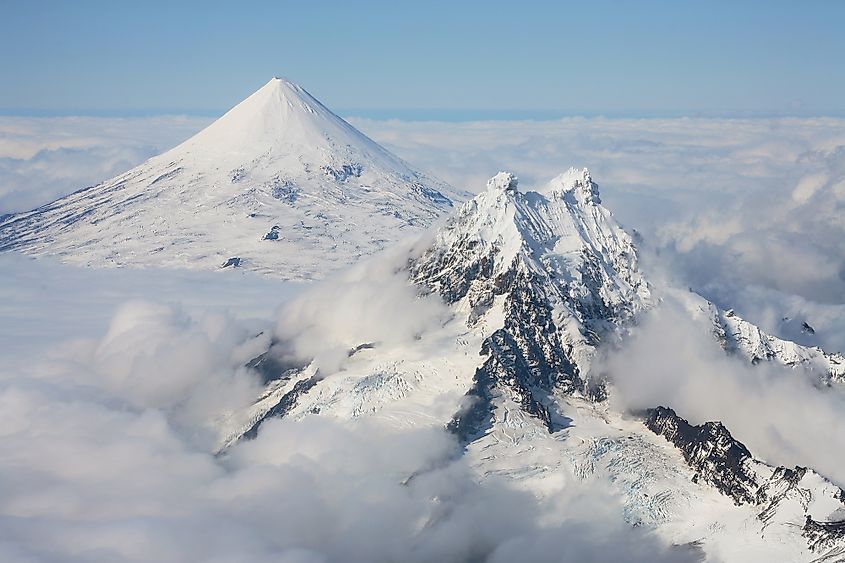
This icy volcano, with snow-covered slopes is only somewhat active, but still more so than any other for hundreds of thousands of miles around. Sitting in solitude in the landscape of Alaska, while it may not be especially attractive to tourists, despite being absolutely beautiful, for the remote location, its beauty shines for the local climbers, who, equipped with a pair of skis, make their way over to its glistening terrain. Its rather romantic name, given by the Aleuts, "Sisquk", is derived from the phrase, "mountain which points the way when I am lost".
The region is also wondrous for extended hikes, with the splendorous northern lights making their display after dusk, there, more often than in any other, as accessible or inhabited, places in the world. Symmetrically-shaped, Shishaldin, being the tallest at 2,857 m, sits westwards of its two neighbours, which are the largest mountains on the Aleutian Islands. This Holocene age volcano is constructed on top of an older glacially dissected volcano, with steam rising from its small crater at the summit, frequent explosive activities, and uncommon lava flows.
Stromboli, Sicily
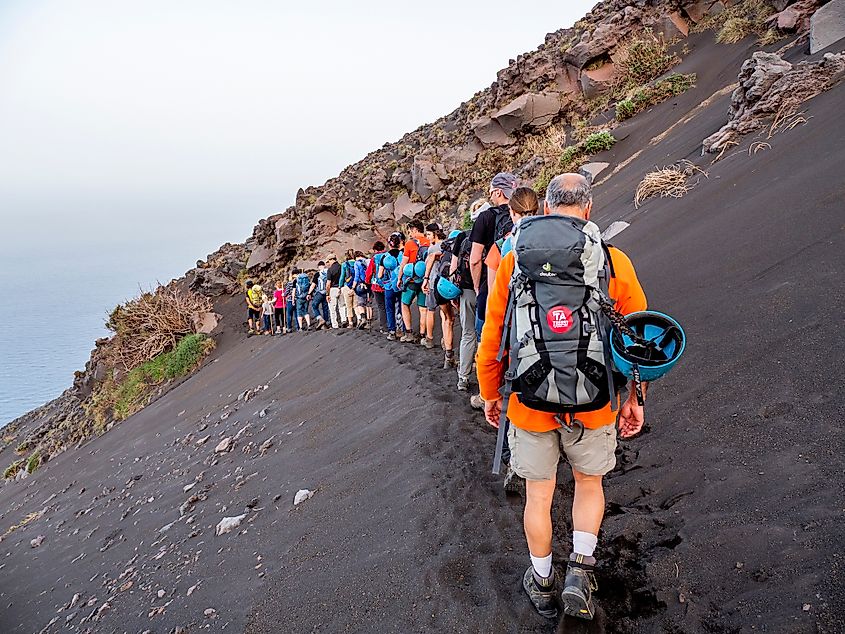
Sitting on a small Aeolian island off of Italy's coast, Stromboli, the namesake volcano is especially active, having been dispensing molten lava 2,000 years and running. Named the “Lighthouse of the Mediterranean” for the display that it puts on, the viewing is especially wondrous at night and from the La Sirenetta Park Hotel. To fully absorb the surrounding landscape of the region, one can also venture on a guided sunset trek.
At 924 m, the hike to the summit, including a spectating of one hour, and back down, shall not take more than four and a half hours. One must note, however, that hiring a guide after 400 first meters is mandatory, at the point of the Sciara del Fuoco. Although mild explosions and magma spews can be observed from a distance, touring the crater will truly leave one in awe of the fireworks. Another popular activity encompasses hiking the Sciara trail from Piscità, set just 2 km west of the port of Stromboli.
Perhaps, it is the potential danger that volcanoes have, giving off a threating vibe and being historically destructive, that makes them so fascinating. Brewing up their own thoughts within their deep, hot hearts, it is also their period ability to wake, at any given time that keeps people on their toes, but in awe, of these unique natural snoring monsters.











